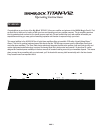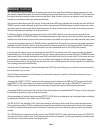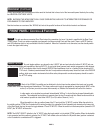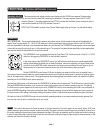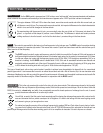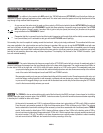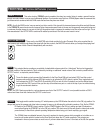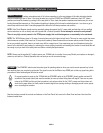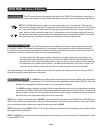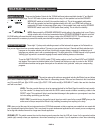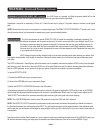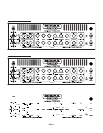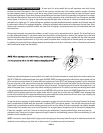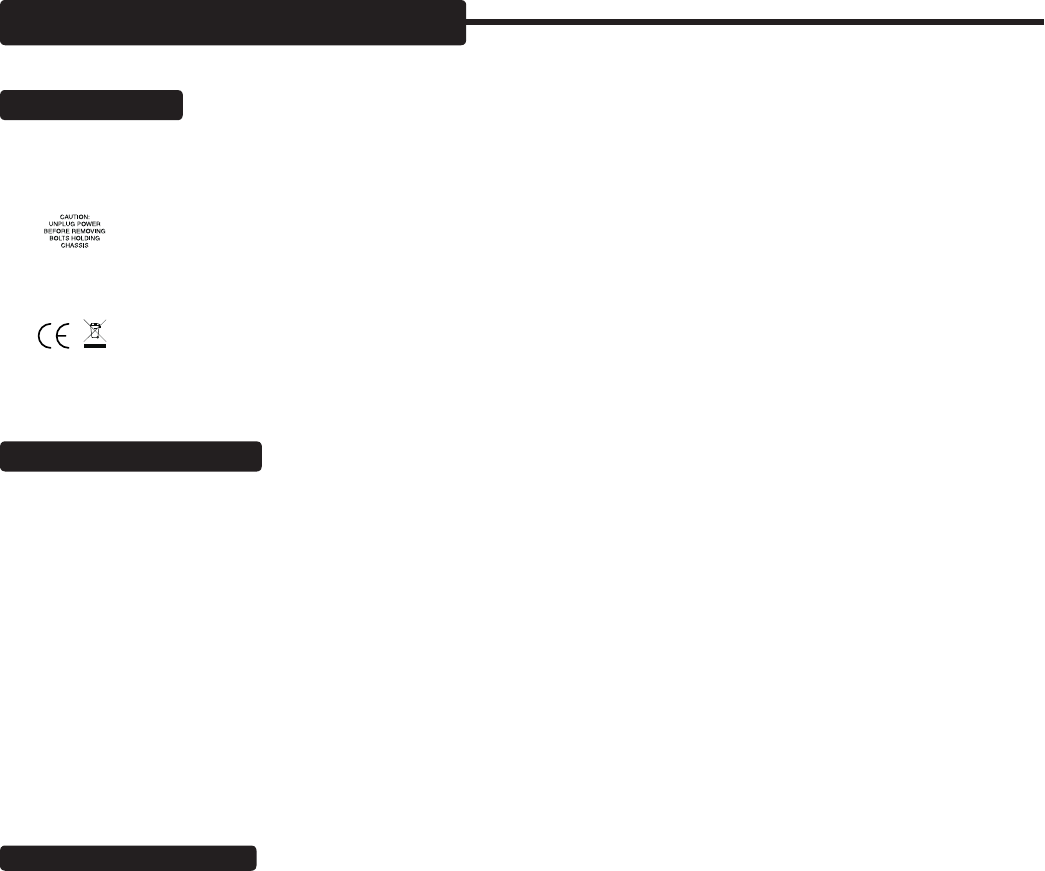
PAGE 9
A.C. RECEPTACLE:
This IEC connector accepts the supplied power cable for the TITAN. When connecting, make sure it is
securely fitted into the socket so that vibration or a stray foot behind the backline can’t work it loose and interrupt your performance.
NOTE: The TITAN draws close to 18 amps of current (and possibly more in a mismatched 2 Ohm scenario)
when used at its highest output levels. This may be more current than some older homes can provide (if the home
has 15 amp circuit breakers). Newer homes and most big venues provide 20 amp lines, but as you probably sur-
mised, there is not much room left for margin here. If you experience your circuit breakers tripping (the home’s or
the internal 20 amp breaker) try reducing the volume (playing loudness) and resetting the breaker. In most cases
this will be enough to put you back in the safety zone and deliver uninterrupted performance.
20 AMP CIRCUIT BREAKER:
The TITAN incorporates a user re-settable circuit breaker to protect against circuit damage
in all types of scenarios. It is possible for the breaker to trip if the amplifier is used at maximum volume for extended periods of
time. Usually the internal auto thermal-protect circuit would kick-in before the breaker trips and mute the signal until such time the
mosfets have a chance to cool down and return to a safe operating temperature.
The other scenario that might cause a breaker to trip would be if a power mosfet went out of tolerance (very
rare) and started to draw excessive current due to the first line of defense (internal mosfet fuses) failing to blow
(extremely rare). In this instance the breaker would trip every time you try to power up and if you ever experience
this phenomenon, the amplifier should be taken to a qualified service technician or sent back to us. Again, this
would be a very rare situation and you will most likely never have the need to touch the circuit breaker.
The double redundancy of the breaker is an added insurance policy that protects your investment and insures that your TITAN
will provide decades of musical inspiration and enjoyment.
SLAVE OUT / SLAVE LEVEL:
The SLAVE feature provides a padded signal that is derived from the Speaker Output and captures
the entire sound of the preamp and power section. This is useful for large venue applications, where multiple TITAN or other slave
amplifiers are strung together for additional power to drive more speaker enclosures.
The SLAVE may also be used as a send signal to feed outboard processing racks in a dry/ wet setup where processing
is done after the TITAN and then fed to a Stereo power amplifier for separate control of the wet sound. This works very
well and is similar to what is done in the recording environment where a dry signal is blended with another channel on
the console that is only the processed (wet) version of the same sound.
NOTE: Once a signal has been taken from the SLAVE , you can not feed the signal back into the TITAN Effects RETURN jack or
INPUT. Doing so will cause a feedback loop resulting in a high pitched squeal, much like a microphone held up to a monitor. You must
go into an external amplifier or device once a signal has been taken from the SLAVE .
NOTE: Always start with the SLAVE LEVEL at 7:00 (off) and increase the level slowly to prevent damage to ears, speakers and the
input stage of external processors.
NOTE: The SLAVE is not optimized for direct interfacing into recording consoles or live mixing boards. For this application it is best
to use the DIRECT OUT.
reAr PANeL: CONTrOLs & FeATures



